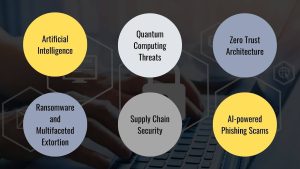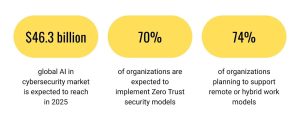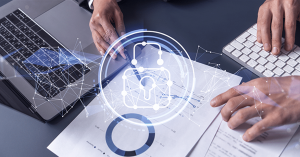E-commerce Security: Best Practices in 2025
This comprehensive guide explores the best practices for e-commerce security in 2025, complete with statistics, expert insights, and practical examples.

Introduction
In 2025, the e-commerce industry continues to grow rapidly, offering consumers unprecedented convenience and businesses significant market reach. However, with this rapid market growth comes increasingly sophisticated cyber threats. To protect operations and maintain customer trust, e-commerce companies must implement robust security measures. This comprehensive guide explores the best practices for e-commerce security in 2025, complete with statistics, expert insights, and practical examples.
E-commerce Market Landscape
The e-commerce landscape in 2025 is characterized by rapid evolution driven by technological advances, changing consumer behavior, and the dynamics of emerging markets. Understanding these trends is critical for companies looking to remain competitive and meet changing global market demands.
1. Mobile Commerce (M-Commerce) Dominance
Mobile commerce continues to assert its dominance, with projections indicating that mobile devices will account for more than 70% of all e-commerce sales by the end of 2025. This surge is attributed to the widespread adoption of smartphones and the convenience they offer for on-the-go shopping. Retailers are optimizing their platforms for mobile interfaces, providing a seamless user experience to accommodate this expanding segment.
2. Integration of Artificial Intelligence and Machine Learning
AI and machine learning are revolutionizing e-commerce operations by delivering personalized shopping experiences, improving customer service with chatbots, and streamlining inventory management. In 2025, AI-powered personalization and automation are standard practices, bringing improved customer engagement and higher conversion rates.
3. Expansion of Social Commerce
Social media platforms have become powerful e-commerce channels. Features like Instagram Shopping and Facebook Marketplace facilitate direct purchases in social environments, merging social interaction with shopping. This trend is especially pronounced among younger demographics who prefer an integrated, seamless shopping experience.
4. Adoption of Augmented Reality (AR)
Augmented reality enhances online shopping by allowing consumers to visualize products in their real-world context before making a purchase. The technology is particularly effective in sectors such as fashion, home decor, and beauty, where viewing a product in context significantly influences purchasing decisions.

5. Growth of Cross-Border E-Commerce
Cross-border e-commerce is growing as consumers seek unique products and better prices internationally. Cross-border sales are expected to account for a significant portion of overall e-commerce revenue by the end of 2025. Retailers are responding by offering localized websites, accepting multiple currencies, and partnering with international logistics providers to ensure seamless delivery.
6. Emphasis on Sustainability
Sustainability is becoming an increasingly critical factor in consumer purchasing decisions. Shoppers increasingly favor brands that demonstrate environmental responsibility through eco-friendly packaging, ethical sourcing, and zero-carbon delivery options. This shift is driving retailers to implement more sustainable practices to meet consumer expectations and regulatory requirements.
7. Voice Commerce on the Rise
Voice shopping, powered by virtual assistants like Amazon Alexa and Google Assistant, is gaining momentum. Consumers value the convenience of hands-free, voice-activated shopping, prompting retailers to optimize their platforms for voice search and commands.
8. Integration of Blockchain Technology
Blockchain technology increases the transparency and security of e-commerce transactions. By providing a decentralized ledger, blockchain ensures product authenticity and streamlines supply chain operations, reducing fraud and building consumer trust.

9. Evolution of Payment Options
Diversification of payment methods is changing the e-commerce landscape. Digital wallets, mobile payments and buy now pay later (BNPL) services are becoming increasingly popular, offering consumers flexible and convenient payment solutions that suit a variety of financial preferences.
10. Secondhand Fashion Market Surge
The second-hand market is experiencing significant growth, driven by consumer interest in sustainable shopping and advances in AI technology that are improving the resale experience. According to The Guardian, global second-hand sales are set to grow 15% in 2024, far outpacing overall fashion growth, with second-hand clothing now accounting for 9% of total fashion sales, worth $227 billion. Analysts predict sales will grow 11% this year as AI-powered search tools improve the shopping experience.
11. Generational Shifts in Online Spending
Consumer spending patterns are changing across generations. For example, in Australia, the average online shopping basket value has fallen to $95, the lowest in a decade, reflecting financial caution among consumers. However, overall online spending has grown 12% to $69 billion, driven by increased spending on essentials and a slight increase in discretionary purchases. Older generations have increased their online spending, while younger demographics have seen basket sizes shrink since the pandemic.
12. Viral Marketing and Influencer Impact
The influence of social media and viral marketing is changing brand strategies. Products that go viral on platforms like TikTok can quickly boost sales. Brands are capitalizing on this trend by creating engaging content and engaging with influencers to reach a wider audience. However, maintaining momentum requires balancing short-term hype with sustainable value and a distinctive brand identity.

13. Challenges in Key Markets
Economic and political shifts are impacting consumer spending in key markets. For example, Douglas, a German beauty retailer, reported a rapid deterioration in market conditions over a three-month period, leading to a downward revision of its 2025 outlook. Factors including declining demand for personal care products and increased competition from online retailers contributed to these challenges.
14. Opportunities in Emerging Markets
Emerging markets present significant growth opportunities for e-commerce. For example, in India, luxury brands are expanding beyond major metropolitan areas into Tier 2 and Tier 3 cities, where incomes have risen and consumers are seeking high-quality products without having to travel. Brands like Bvlgari are increasing their presence across online and physical channels to capture this growing market segment.
Cybersecurity Trends in E-commerce
As the e-commerce industry evolves, so too do cybersecurity threats. Key trends shaping cybersecurity in the industry include:
- Artificial Intelligence (AI) in Cybersecurity: AI is becoming an integral part of detecting and responding to cyber threats, enabling rapid analysis of massive amounts of data to identify patterns and anomalies that indicate attacks.
- Rise of Ransomware and Multifaceted Extortion: Ransomware attacks are on the rise, with cybercriminals not only encrypting data but also threatening to expose sensitive information if their demands are not met.
- Quantum Computing Threats: Advances in quantum computing are posing challenges to traditional encryption methods, requiring the development of post-quantum cryptography to protect data.
- Supply Chain Security: There are increasing attacks targeting supply chains, exploiting vulnerabilities in third-party suppliers to infiltrate larger networks.
- Zero Trust Architecture: The implementation of Zero Trust models, which require strict identity verification for each access request, is becoming increasingly common to reduce the risks of a breach.
- AI-powered Phishing Scams: Cybercriminals are using AI to create highly personalized phishing emails, making the scams more convincing and harder to detect.

Forecasts and Figures
- AI in the Cybersecurity Market: The global AI in cybersecurity market is expected to reach $46.3 billion in 2025, highlighting the significant investment in AI-powered security solutions.
- Implementing a Zero Trust Security Model: In 2025, 70% of organizations are expected to implement Zero Trust security models to enhance their defense mechanisms.
- Securing Remote Work: With 74% of organizations planning to support remote or hybrid work models, robust cybersecurity measures are critical to protecting distributed networks.
As e-commerce continues to thrive, integrating advanced cybersecurity strategies remains paramount to protect against the dynamic and sophisticated threats of 2025.

Best Practices for E-commerce Security in 2025
1. Implement Multi-Factor Authentication (MFA)
Improving account security by requiring multiple forms of verification, such as passwords combined with biometrics or one-time codes, significantly reduces the risk of unauthorized access. In 2024, MFA adoption among online retailers reached 80%, highlighting its effectiveness in protecting user accounts.
Example: An online retailer integrated MFA into its customer sign-in process, resulting in a 60% reduction in account takeovers within six months.
2. Utilize Advanced Encryption Protocols
Protecting sensitive data during transmission and storage is critical. Using advanced encryption standards ensures that intercepted data remains undecipherable to unauthorized parties. Almost 90% of e-commerce sites now use SSL certificates to protect data in transit.
3. Conduct Regular Security Audits
Conducting a comprehensive security assessment helps identify and fix vulnerabilities early. Regular audits allow companies to mitigate potential threats before they are exploited. Tools like Nessus or OpenVAS can be used to scan for vulnerabilities, and engaging ethical hackers to perform penetration testing can uncover hidden risks.
Case Study: A mid-sized e-commerce company conducted quarterly security audits, which led to the early detection and fix of a critical vulnerability that could have compromised customer data.

4. Keep Software and Systems Updated
Regularly updating all software, including e-commerce platforms, plugins, and security tools, is vital to patch known vulnerabilities. Outdated systems are prime targets for cyberattacks. Enabling automatic updates where possible and regularly checking for updates can reduce this risk.
Statistic: Companies that apply security patches in a timely manner reduce the risk of cyber incidents by up to 50%.
5. Educate Employees and Customers
Learning to recognize phishing attempts and other common cyber threats creates an informed workforce and customer base, acting as an additional layer of defense against security breaches. Cybersecurity awareness is one of the most effective defenses against threats, as many breaches are the result of human error.
6. Implement Real-Time Fraud Detection Systems
Using AI and machine learning to monitor transactions for unusual patterns allows fraudulent activity to be detected and prevented immediately. Machine learning algorithms have been instrumental in reducing fraudulent transactions by 30% for large online retailers.
Example: An e-commerce platform implemented AI-powered fraud detection, leading to a 25% reduction in chargebacks in a year.

7. Secure Payment Gateways
Using trusted payment processors that are compliant with the Payment Card Industry Data Security Standard (PCI DSS) ensures that payment information is processed securely. Working with trusted payment processors like Stripe, PayPal, or Adyen and not storing credit card information on your own servers improves security.
Statistic: E-commerce sites that use PCI DSS-compliant payment gateways experience 40% fewer payment-related security incidents.
8. Deploy Web Application Firewalls (WAF)
Installing a WAF to filter and monitor HTTP traffic between web applications and the Internet protects against attacks such as SQL injection and cross-site scripting. This measure is crucial to protecting web applications from common exploits.
Case Study: leading online marketplace implements WAF that blocked over 1 million malicious requests in the first month, preventing potential data leaks.
9. Backup Data Regularly
Regularly backing up all critical data ensures business continuity in the event of data loss or ransomware attacks. It is recommended to automate daily backups and store them in multiple locations, including external or cloud storage.
Statistic: Companies with robust data backup strategies recover from ransomware attacks 60% faster than those without them.

10. Develop an Incident Response Plan
It is important to develop a clear plan that outlines the steps to take in the event of a security breach, including communication strategies and remediation processes. Regularly testing and updating the incident response plan ensures preparedness for potential security incidents.
11. Zero Trust Security Model
Traditional security models assume that users within the network are trustworthy. A Zero Trust approach requires continuous verification of every user and device, regardless of location.
Implementation:
- Implement strong identity and access management (IAM) policies.
- Enforce least privilege access (users are granted only the minimum necessary permissions).
- Use micro-segmentation to separate network access based on security needs.
Example: Google uses a Zero Trust framework known as BeyondCorp to secure its internal systems.
12. AI-Driven Threat Detection and Response
AI and machine learning can proactively identify and mitigate threats in real time.
Implementation:
- AI-powered fraud detection tools analyze customer behavior to identify anomalies.
- Behavioral biometrics track typing speed, mouse movements, and login patterns to identify potential fraudsters.
- Automated incident response responds to threats instantly, minimizing damage.
Example: Mastercard’s AI-powered cybersecurity system is reported to block 50% more fraudulent transactions than traditional methods.
13. Dark Web Monitoring and Threat Intelligence
Stolen credentials and sensitive data often circulate on the dark web before being used in attacks.
Implementation:
- Automated dark web monitoring tools scan for leaked credentials and alert companies in real-time.
- Threat intelligence feeds provide up-to-date information on emerging cyber threats.
- Proactive security measures based on predictive analytics.
Example: Experian and Norton LifeLock monitor the dark web for compromised credentials, helping companies prevent account takeovers.

Conclusion
In 2025, the e-commerce industry is undergoing a dynamic transformation driven by technological advancements, changing consumer behavior, and growing security concerns. Mobile commerce, AI-powered personalization, social commerce, and augmented reality are redefining the online shopping experience. At the same time, sustainability, blockchain adoption, and diverse payment options are changing the way companies operate and interact with customers.
As digital transactions grow, cybersecurity remains a critical issue. Companies must prioritize robust security measures, including advanced encryption, multi-factor authentication, AI-powered fraud detection, and blockchain verification, to protect customer data and maintain trust. Rising cyber threats, from phishing attacks to sophisticated AI-powered fraud, require constant vigilance and investment in security systems.

The next five years will bring even more change, with AI and machine learning playing an increasingly dominant role in e-commerce personalization, automation, and security. Cross-border e-commerce will continue to expand, and sustainability will continue to influence consumer choice. New technologies such as voice commerce and biometric authentication will change the shopping experience, making it smoother and more secure.
To thrive, e-commerce businesses must remain adaptive, invest in new security technologies, and stay ahead of market trends. Success in this rapidly evolving industry will depend on a company’s ability to innovate, protect its digital infrastructure, and meet the changing expectations of tech-savvy consumers.
If you have any questions or an idea for an e-commerce development project, contact us via sales@instandart.com or fill out the form on the main page of the site to discuss. We are always ready to help!